Earthquake
- Turkey-Syria Earthquake – February 6, 2023
- Most deadly natural disaster in Turkey’s modern history • ~60000 died and $150 million USD of damage
- Damage to an area the size of Germany
- 14 million people impacted, 2 million homeless
- Syrian refugees in Turkey severely impacted
Earthquake Terms and Principles
- Earthquakes represent a sudden release of built-up energy due to stress (pressure) in the lithosphere
- Earthquakes occur along faults
- Faults are planar breaks in rock where there is displacement of one plate relative to the other plate
- Creep (aseismic slip) is the slow and gradual movement of plates or the displacement without significant earthquake activity
- Minor earthquakes that barely register or not felt
- Stress being applied to the rock externally (i.e., plate movement) and friction between rocks prevents slipping if fault is there or perhaps there is no fault yet
- Elastic deformation occurs and energy (stress) builds up
- If the stress exceeds the friction (or rupture strength of the rock), a sudden movement occurs to release the stress ⇒ earthquake or seismic slip
- Rocks snap back elastically to their previous dimensions after the sudden displacement and associated stress release ⇒ elastic rebound

- Focus or hypocenter - point of first movement on the fault
- Epicenter - point on surface directly above the focus
- Focal depth - depth of the focus
- Shallow - 0-70km
- Intermediate - 70-350 km
- Deep 350-700 km (still mantle)
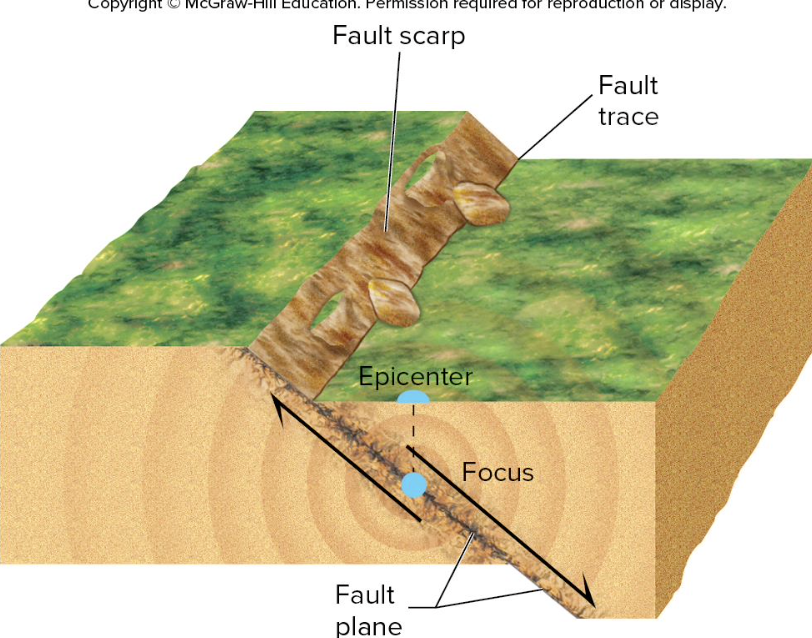
Strike and Dip
Basic geologic terms
- Dip direction - compass direction of the angle of the rock
- Dip angle - angle of the rock relative to the horizontal plane
- Strike - compass direction the bed is sitting (perpendicular to dip)
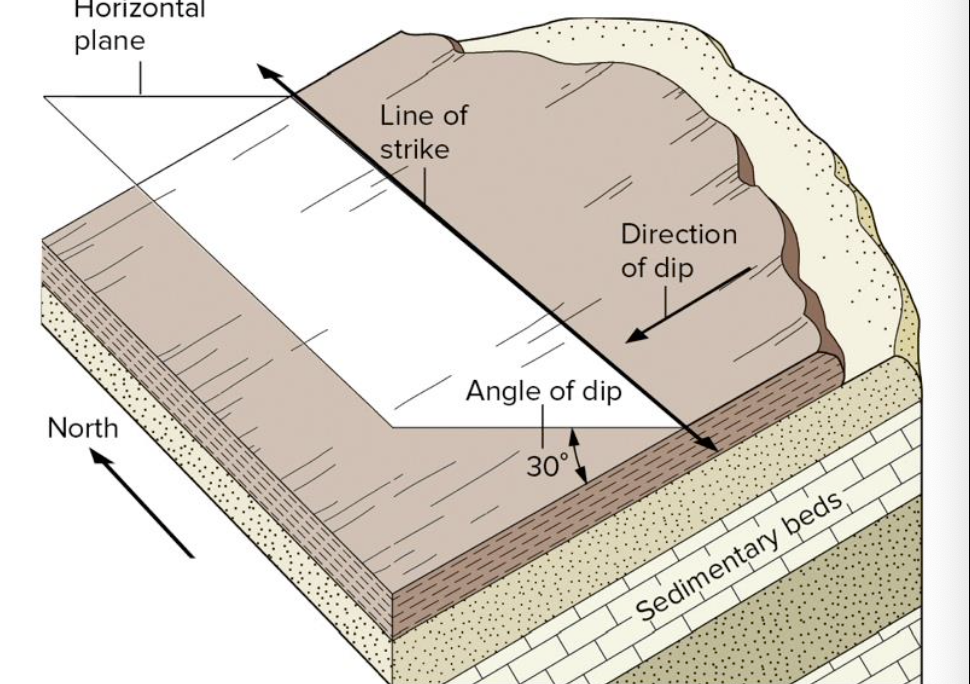
Types of Faults
Strikes-slip fault - displacement occurs parallel to strike of rock (horizontal movement and displacement)
- Common on transform faults - e.g., San Andreas fault, East Anatolian Fault (2023 Turkey-Syria earthquake)

Dip-slip fault - displacement occurs in the vertical direction wit the dip
- Normal fault - side above fault slid down
- Reverse fault - side above fault moved up (steep slope)
- Thrust fault - side above fault moved up (shallow slope)

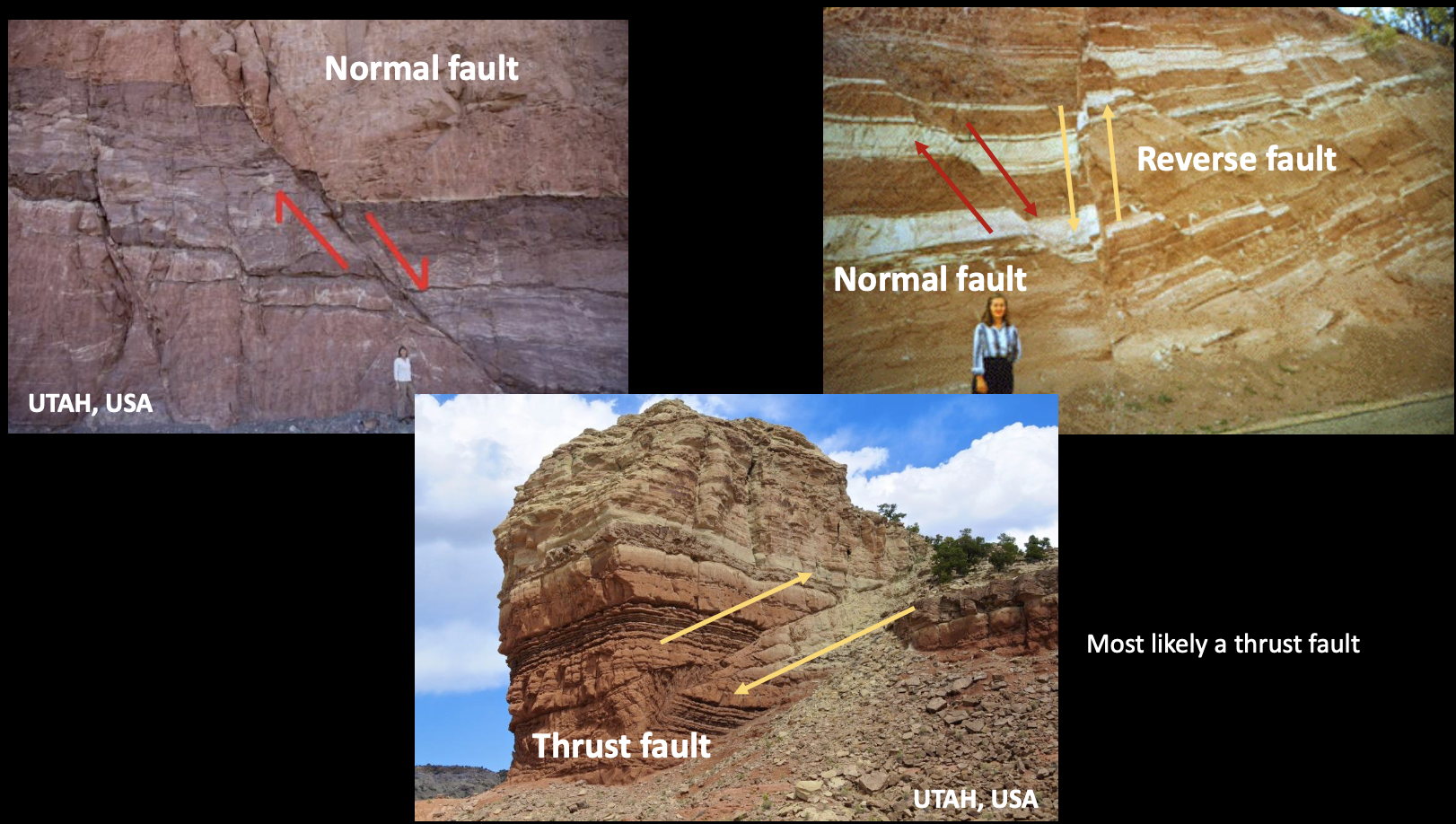
I don't really understand reverse fault??
Earthquake Locations
- Majority are shallow
- Deeper ones occur near subduction zones
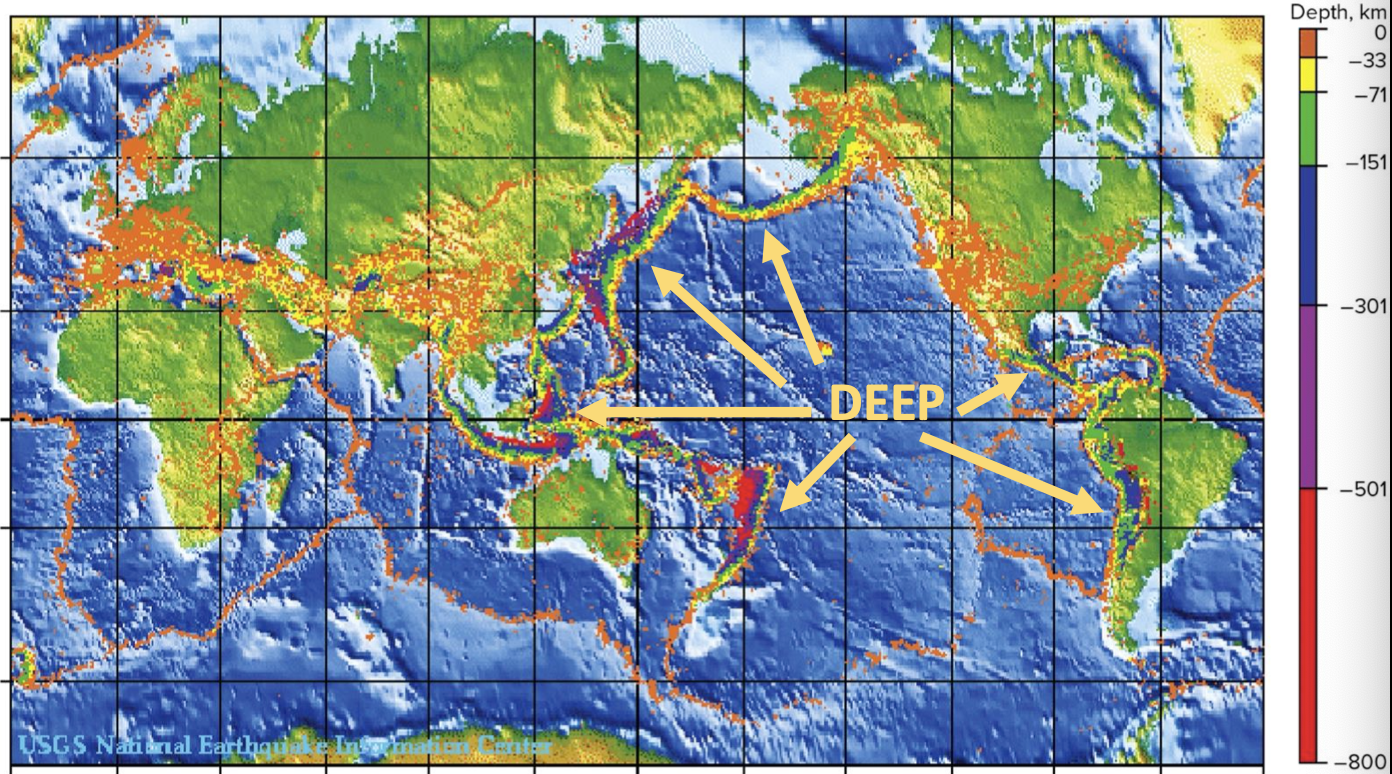
Measuring Seismic Energy
- Seismometer - the device measuring seismic energy
- Seismogram - the record (data) of the seismic energy

Seismic Waves
- A seismic wave is how the stored-up energy travels from the focus
- Body Waves - through interior of Earth
- P-waves - Compressional
- S-waves - Shear
- Surface Waves - on surface of Earth
- L-waves - Love waves - Shear
- R-waves - Rayleigh waves - Ripples
- Surface waves larger in amplitude/displacement and cause most of the shaking and damage
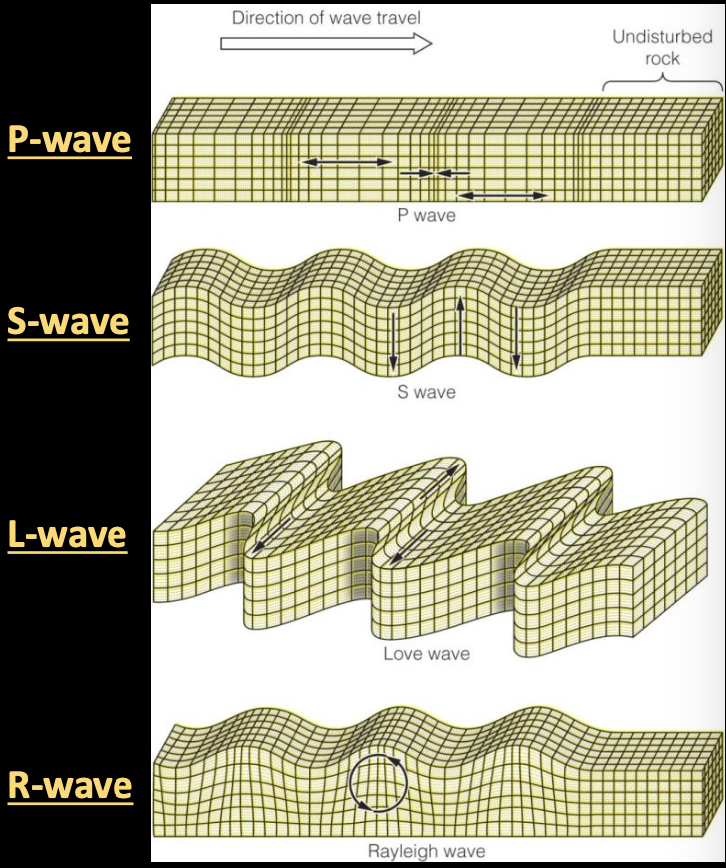
P-wave
P-waves or primary waves
They are the fastest seismic waves, and can travel through solids, liquids and gases. P-waves are compressional, or “push-pull”, moving material back and forth along a line in the same direction that the waves themselves are moving (parallel to direction of travel).
First to arrive at a seismograph and first recorded!
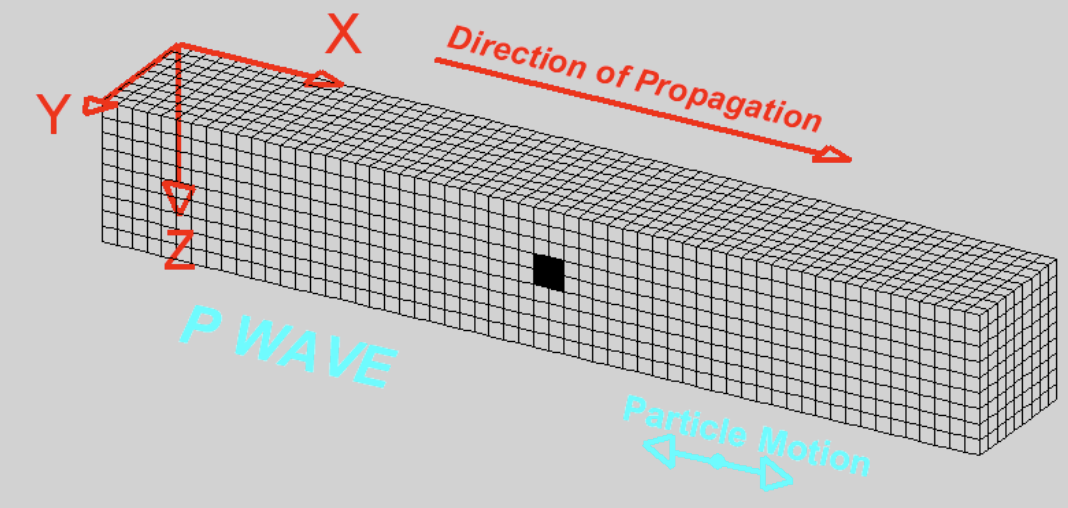
S-wave
S-waves or secondary waves
Are somewhat slower than P-waves and can only travel through solids. These shear waves move material perpendicular to the direction of travel, thereby producing shear stresses. S-waves cannot travel through liquids, because they have no shear strength.
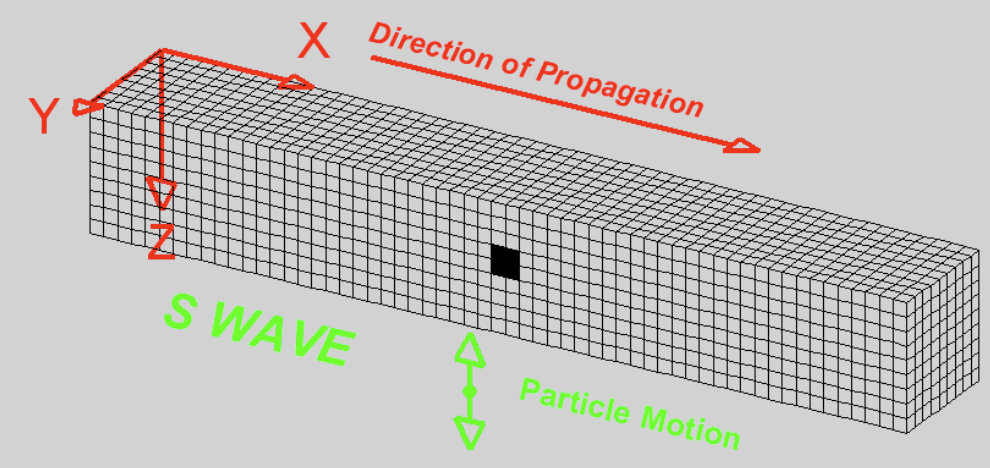
Love wave
L-waves (Love waves)
Are slower than body waves, travel along the Earth’s surface, and move material back and forth in a horizontal plane perpendicular to the direction of wave movement.
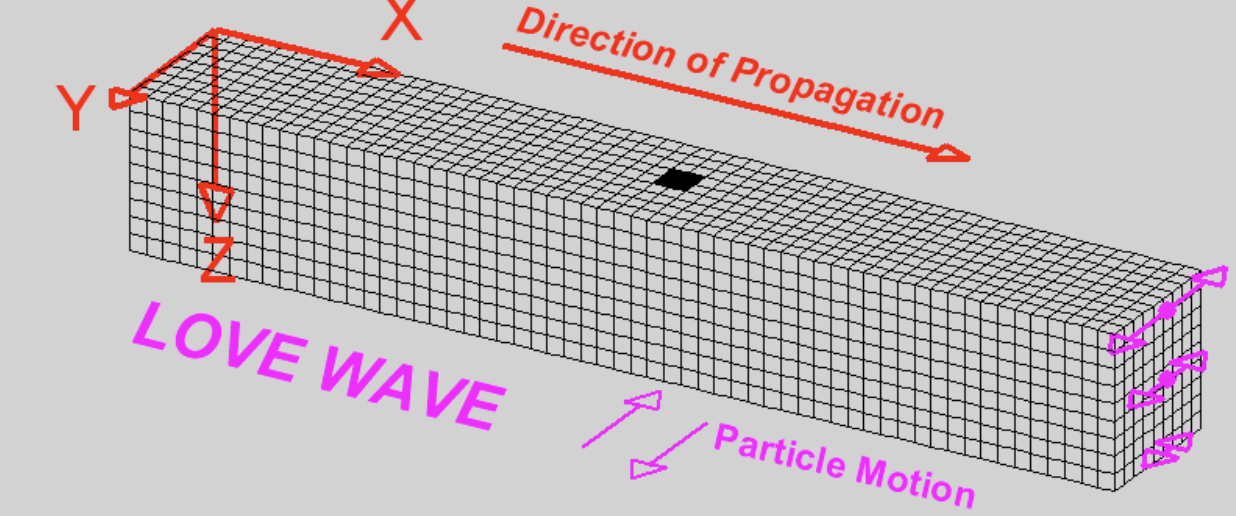
Rayleigh wave
R-waves (Rayleigh waves)
Are slower than body waves, travel along the Earth’s surface, and move material in an elliptical path within a vertical plane oriented parallel to the direction of wave movement.

Locating the Epicenter
- Energy released from an earthquake must travel through the Earth
- Density of rock/fluids will affect the travel time for seismic waves
- Waves move fast through high density rocks
- Waves move slow through low density rocks
- Seismograph detects ground movement and can be useful in calculating the location of an epicenter
- Records arrival of different seismic waves
- Interval of time between the first arrivals of P waves and S waves is a function of distance to the epicenter
- Requires at least 3 seismographs to triangulate location of an earthquake
P and S waves start out from the focus at same time. Due to differences in velocity, P-wave gets father and farther ahead of the S-wave with time. Travel-time curve can be used to determine the distance to the focus based on the time gap between first P and S wave arrivals and origin time of earthquake based on arrival time.
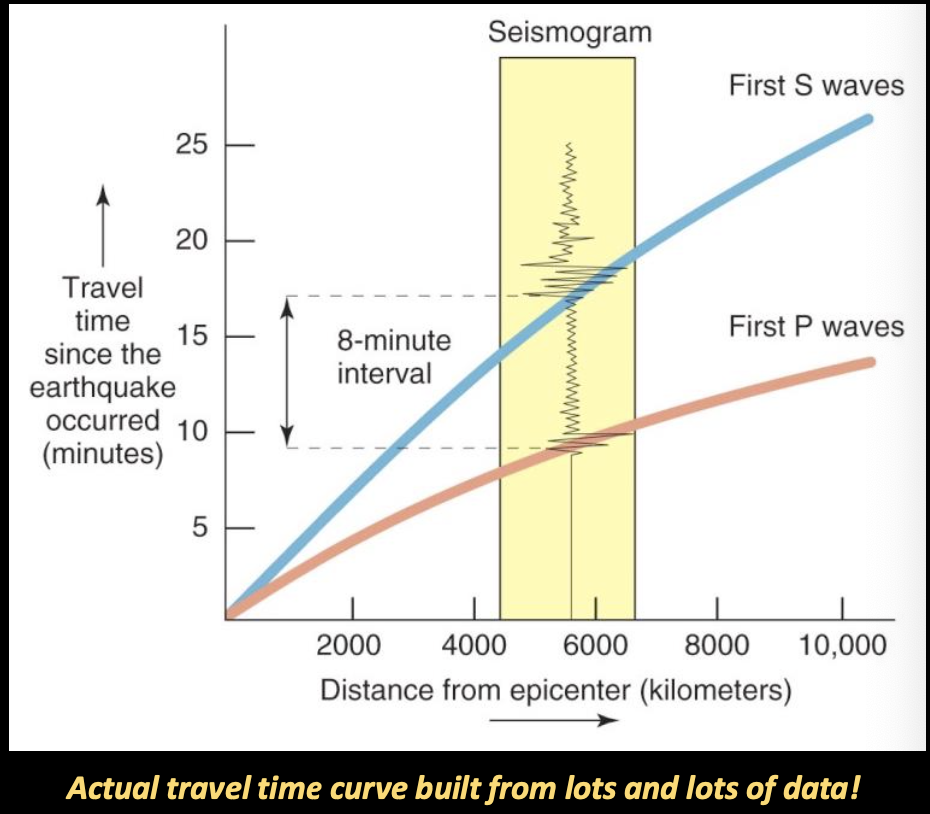
Triangulation
Plotting distances from 3 stations on a map, as circles with radii equaling the distance from the quake, will show the location of the epicenter.
Measuring Earthquakes for Humans
Magnitude
The amount of ground motion related to an earthquake
- Richter magnitude scale: Based on shaking / displacement near epicenter, but developed in California and not useful in other regions with deeper earthquakes on different types of faults and rocks.
- Moment magnitude: Based on area of surface break, displacement, and strength of rock (now used by USGS)
Intensity
Effect on humans, and their structures, caused by the energy released by an earthquake.
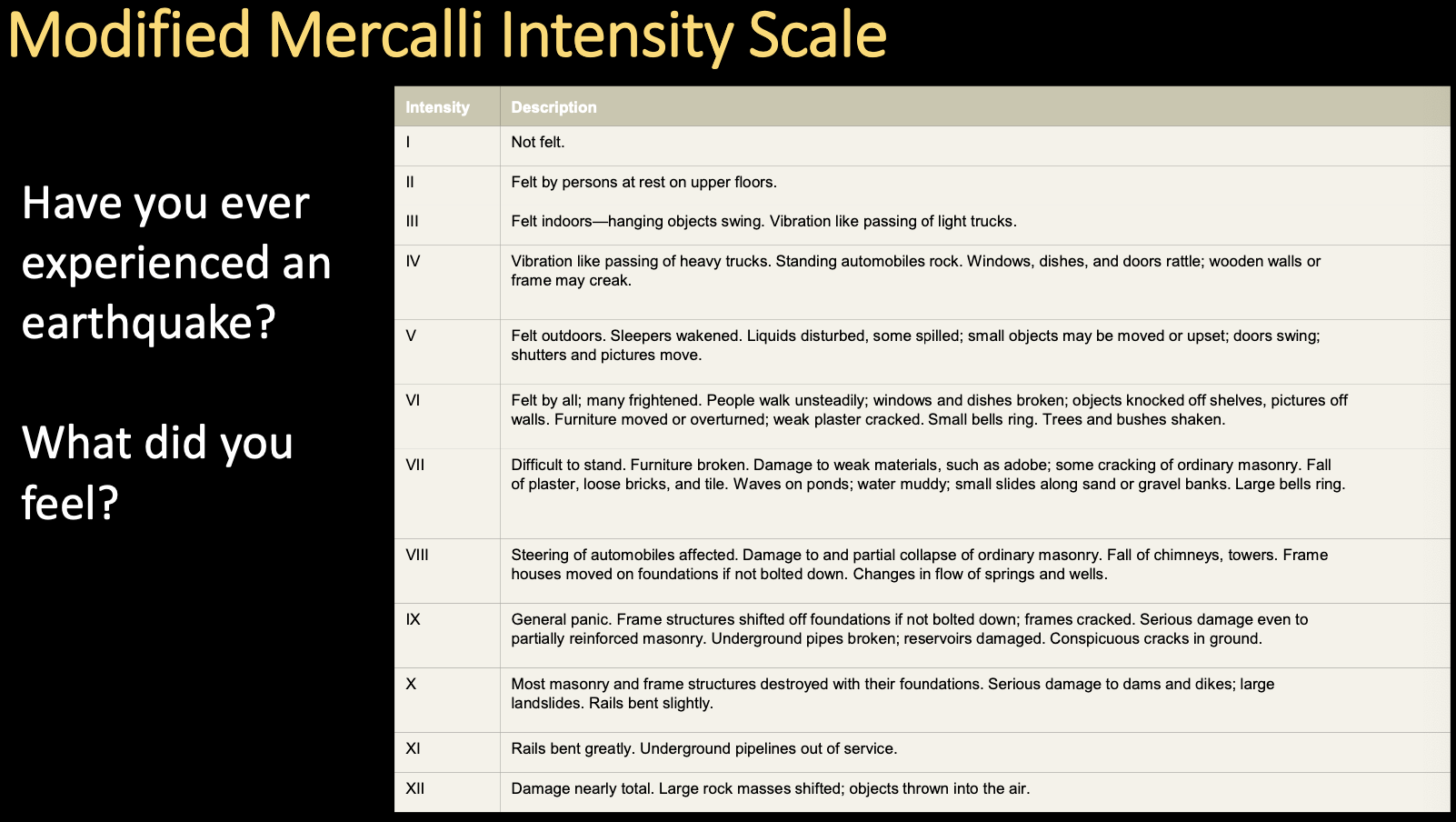

Earthquake-Related Hazards & Means to Reduce Them (Prevention)
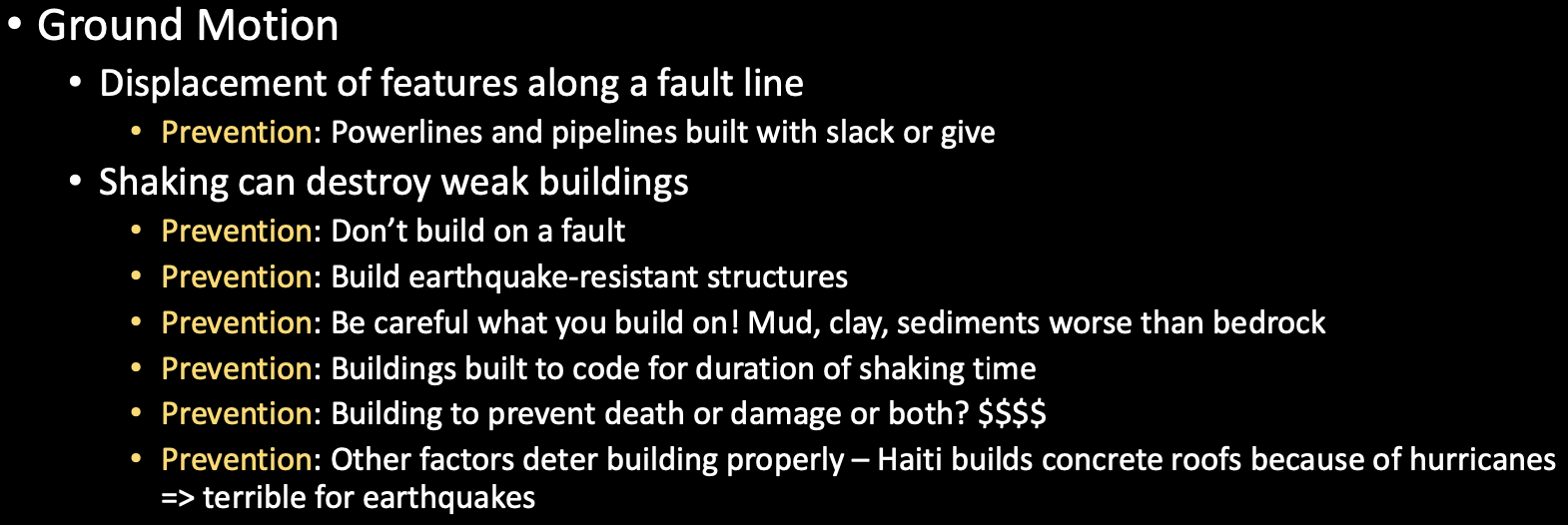

Tsunamis
Seismic sea waves.
- Large, fast waves generated from offshore, dip-slip or megathrust fault earthquakes
- Difficult to warn people and thus can be extremely devastating
- Prevention: Warning systems based on buoy data recording sea height after registered earthquakes
Megathrust fault
Fault at a subduction zone; potential for the strongest possible earthquakes.
2004 Sumatran disaster
- Fault between Burmese and Indian plates
- Magnitude 9.1-9.3 earthquake on Dec 26, 2004
- 30 m high waves once they reached shore
- Over 200 000people killed in 14 countries
- Killed by the tsunami directly
- 3rd largest recorded earthquake ever

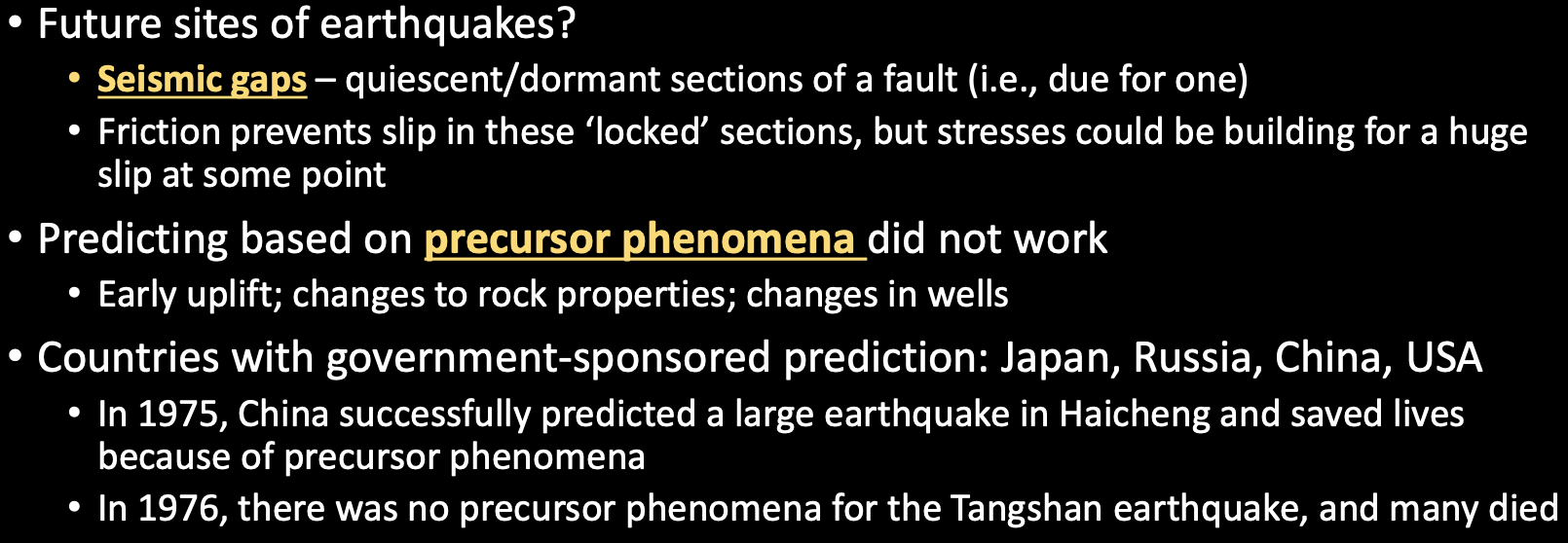
Prediction and Forecasting
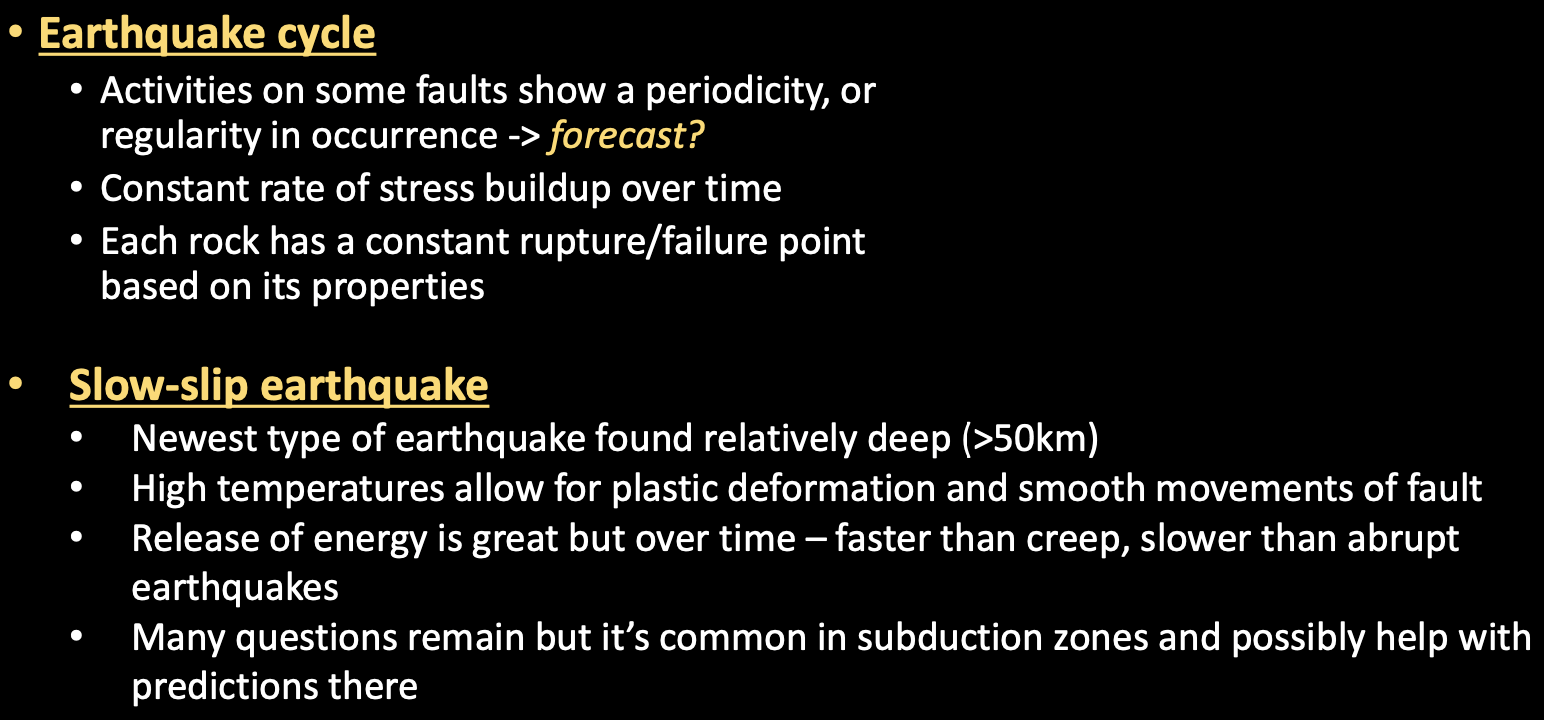

Can we control earthquakes?
- If an earthquake is a release of energy, why can’t we initiate that release?
- Fluids in fault zones may facilitate movement along a fault and can be used in locked sections to release stress through small earthquakes
Example:
- Liquid-waste-disposal correlation with earthquakes
- Fracking
- But…
- Can’t control how much energy is released
- Doesn’t sound like the safest option